2024-11-22 05:04:00
blog.separateconcerns.com
published 2017-05-07,
updated 2024-11-24
[ home ]
This post is a rough transcription of a lightning talk I gave at dotScale
2017.
EDIT (2024-11-24): this post is on HN today.
For people finding this now, Lima has shut down since then.
One of the things I work on at Lima is master-master
filesystem replication. In this kind of system, we need to
track causality. In a nutshell,
given two events modifying a given piece of data and originating from different
nodes in the system, we want to know if one of those events could have
influenced the other one, or in other words if one of those events
“happened before” the other
one.
To do that, we use constructs such as
Version vectors. The idea is
that we give each node in the system a globally unique identifier, and we
associate it to a counter.
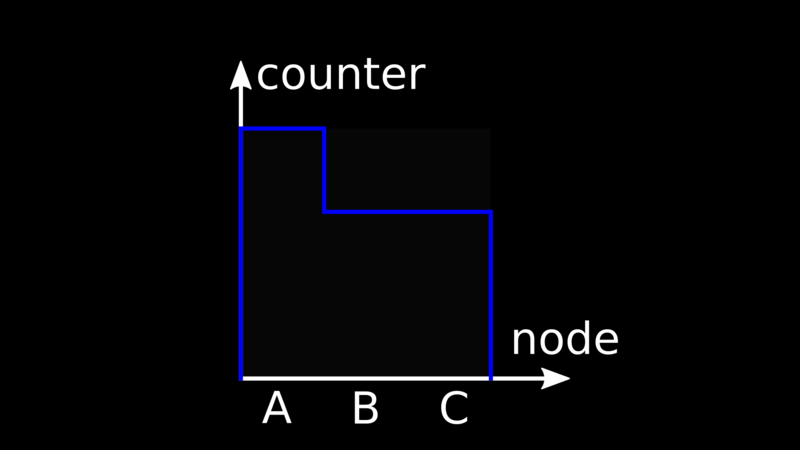
When an event modifying data on a node occurs,
we increment the local value of the corresponding counter by one.
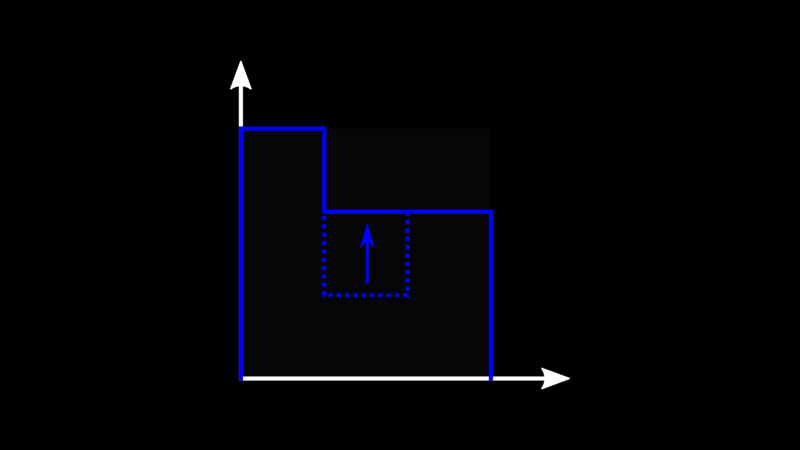
Version Vectors are partially ordered. Given two vectors, if we can find one
such that, for every node, its counter is higher than the other one, then
we say it descends the other one, meaning the related event “happened after”
the other one. Otherwise, we say that the vectors are concurrent, and typically
that means we will probably have some kind of data conflict to solve.
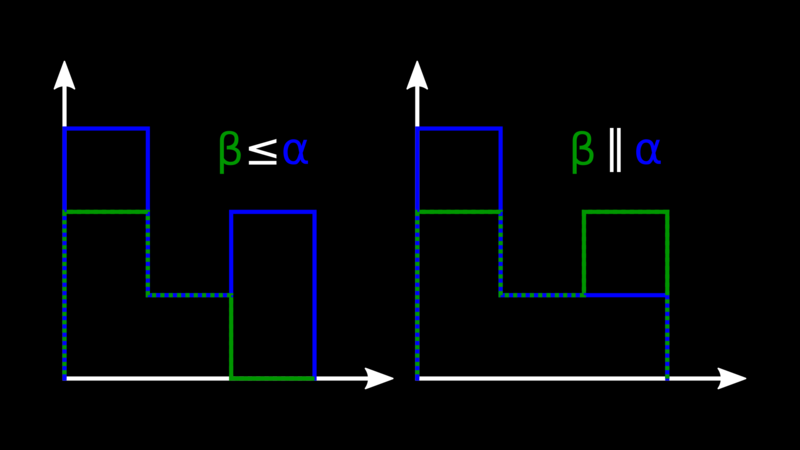
When we merge data changes we also merge the vectors, and to do so we take
the maximum value of the counter for every node.
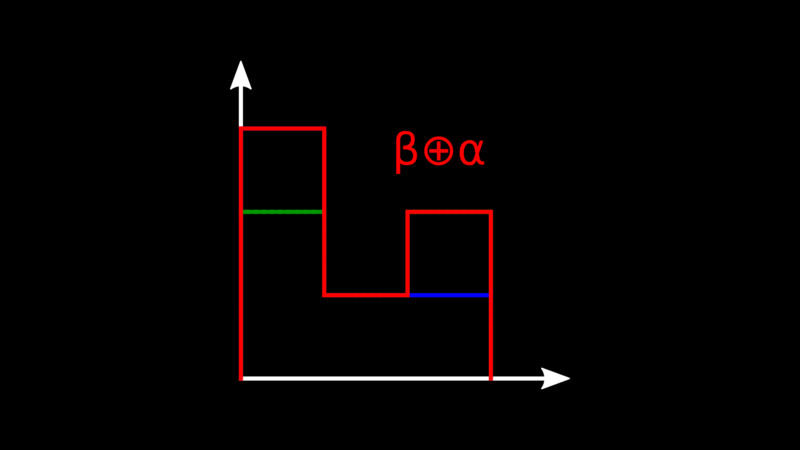
This works fine in most cases, but there is one case where it breaks down:
highly dynamic systems experiencing a lot of churn. This means systems where
nodes join the system, modify some data, then leave forever. The issue with
such systems is that, even though there may not be a lot of active devices at
any given point in time, the number of unique node identifiers in version
vectors keeps increasing. We call that issue actor explosion.
Interval Tree Clocks are an attempt to solve this problem. Instead of
giving a unique identifier to every node in the system, we take the
real-valued interval [0, 1] and attribute a part of it (not necessarily
contiguous) to every node. On top of it, we draw an integer-valued curve.
We call the combination of the interval share and the curve a stamp.
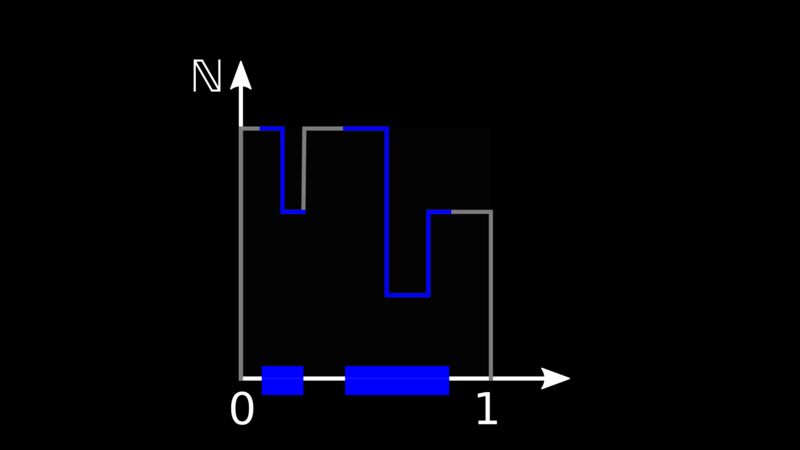
To add a new node to the system, we start from an existing node and we fork it,
meaning we give part of its share of the interval to the new node.
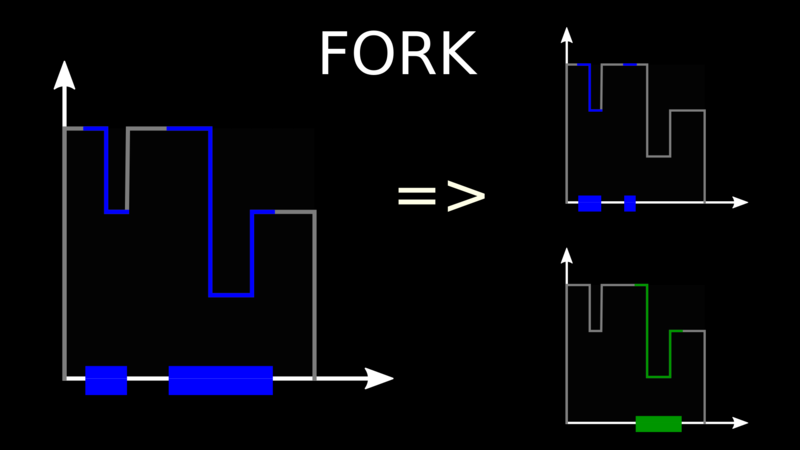
When an event occurs on a node, it increases the height of the curve of its
copy of the stamp anywhere within its share of the interval. Comparison works
similarly to Version Vectors: if the curve of a stamp is above the other one,
it descends it, otherwise the curves intersect and the stamps are concurrent.
When a node wants to leave the system, it merges back with any other node and
surrenders its share of the interval. To merge, we just take the maximum
curve.
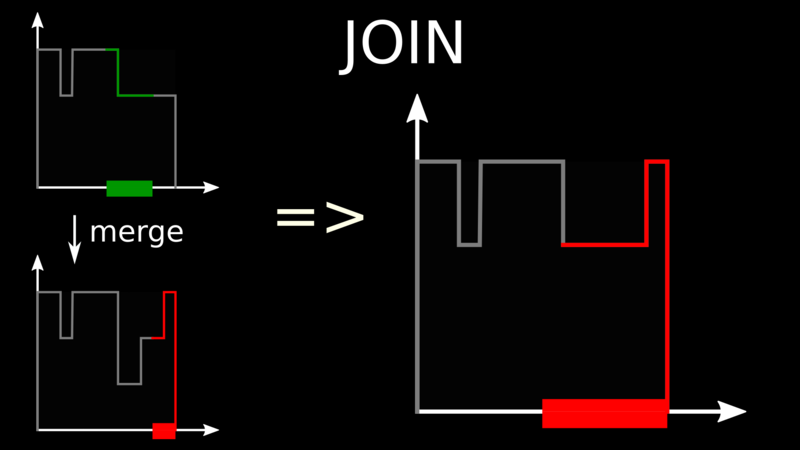
The beauty of this scheme is that a node only has to know about its share of
the interval, not information about all other nodes. There are no globally
unique node identifiers.
If we choose how we increase the height of the curve when an event occurs in a
clever way which I will not detail here, we can ensure the complexity of the
curve remains low. We can then encode it efficiently using a tree-shaped data
structure and a custom binary format, with a size that depends more on the
number of nodes interacting with the data at a given point in time than
on the overall number of nodes which have touched it since inception.
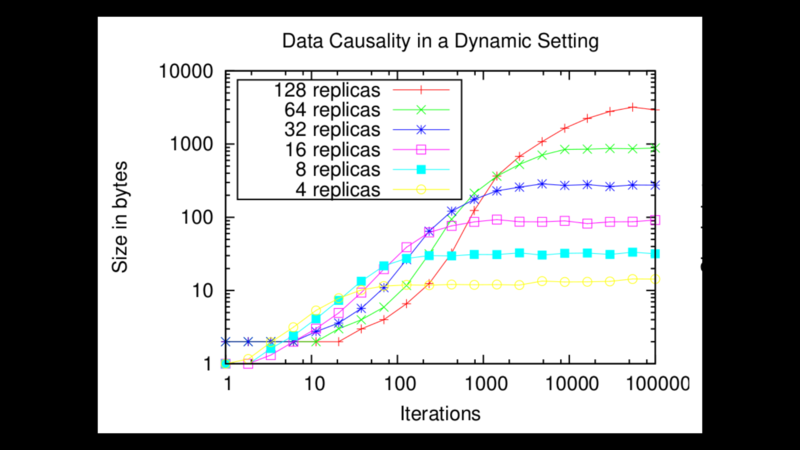
If you want to know more, I encourage you to read
the 2008 paper by Paulo Sérgio
Almeida, Carlos Baquero and Victor Fonte; it is one of the best I know on the
topic of causality. You can also check out my Lua implementation of
ITC or one of the other implementations
linked in the README.
EDIT (2024-11-24): other interesting resources are this slide deck by Carlos Baquero
and those posts by Fred Hebert.
Keep your files stored safely and securely with the SanDisk 2TB Extreme Portable SSD. With over 69,505 ratings and an impressive 4.6 out of 5 stars, this product has been purchased over 8K+ times in the past month. At only $129.99, this Amazon’s Choice product is a must-have for secure file storage.
Help keep private content private with the included password protection featuring 256-bit AES hardware encryption. Order now for just $129.99 on Amazon!
Support Techcratic
If you find value in Techcratic’s insights and articles, consider supporting us with Bitcoin. Your support helps me, as a solo operator, continue delivering high-quality content while managing all the technical aspects, from server maintenance to blog writing, future updates, and improvements. Support Innovation! Thank you.
Bitcoin Address:
bc1qlszw7elx2qahjwvaryh0tkgg8y68enw30gpvge
Please verify this address before sending funds.
Bitcoin QR Code
Simply scan the QR code below to support Techcratic.

Please read the Privacy and Security Disclaimer on how Techcratic handles your support.
Disclaimer: As an Amazon Associate, Techcratic may earn from qualifying purchases.



































![Legend of Zelda: Ocarina of Time Walkthrough Part 4 [3/3]](https://techcratic.com/wp-content/uploads/2025/08/1755588431_maxresdefault-360x180.jpg)
















































![[DEBUT COVER] Intergalactic Bound – Yunosuke / CircusP [MIKU EXPO 10th]](https://techcratic.com/wp-content/uploads/2025/08/1755598927_maxresdefault-360x180.jpg)













